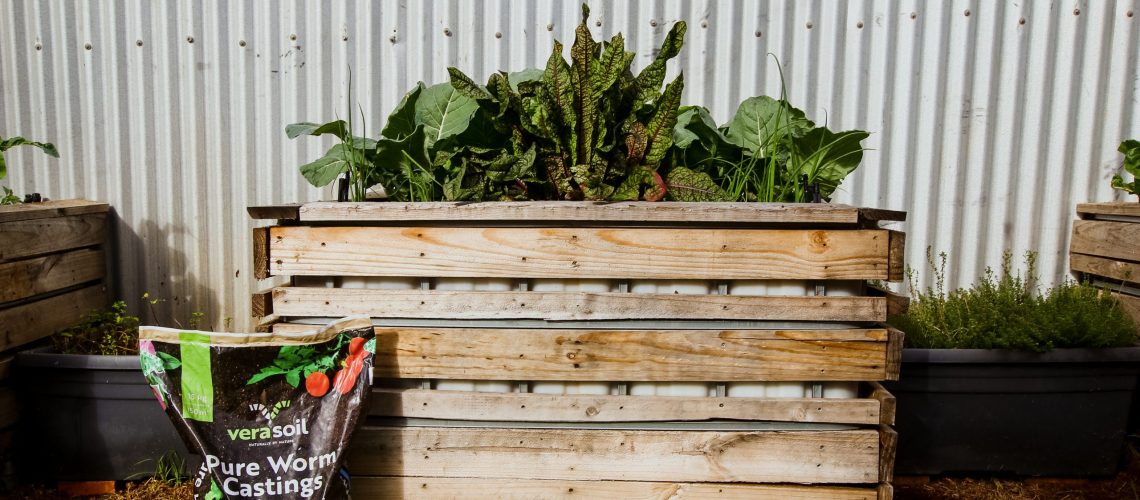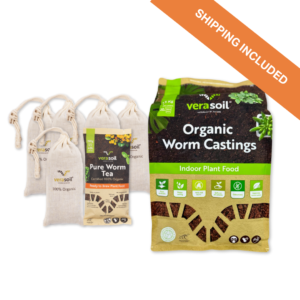

Gary Dal Broi
Agronomist & Production Innovation /
Managing Director
Maximising Winter Harvest: Essential Crops to Plant and Harvest During Winter


Gary Dal Broi
Agronomist & Production Innovation /
Managing Director
Maximising Winter Harvest: Essential Crops to Plant and Harvest During Winter
We recently completed a garden transformation in inner west Sydney, using a few 15kg Verasoil bags to convert a small backyard into a beautiful garden.
When we think of farming and gardening, our minds often conjure up images of vibrant spring gardens and bountiful summer harvests. However, the winter season doesn’t have to be a dormant period for your green thumb. With careful planning and the right selection of crops, you can continue to cultivate a thriving garden even in the cooler months. In this blog post, we will explore the wonders of winter gardening, highlighting both the plants you can harvest during winter and those you can start planting to ensure a fruitful spring.
Harvesting During Winter
While the growth rate of most plants slows down during winter, some resilient crops flourish in the cold weather. By choosing cold-tolerant varieties and employing protective measures, you can enjoy a steady supply of fresh produce even in the coldest months. Here are a few options for your winter harvest:
1. Leafy Greens:
Leafy greens like kale, spinach, Swiss chard, and winter lettuce varieties are excellent choices for winter harvesting. These robust greens can handle lower temperatures and continue to grow throughout the season. Consider using row covers or cold frames to provide extra protection against freezing temperatures.
2. Root Vegetables:
Root vegetables such as carrots, parsnips, beets, turnips, and radishes can be harvested during winter. These hardy crops develop their flavours in cooler temperatures, making them even more delectable. Ensure that you harvest them before the ground freezes completely to avoid any damage.
3. Brassicas:
Brassicas, including broccoli, cauliflower, Brussel sprouts, and cabbage, thrive in colder climates. Plant them in late summer or early autumn, so they have time to establish before winter sets in. These veggies are not only delicious but also packed with essential nutrients, making them a valuable addition to your winter harvest.
4. Herbs:
Certain herbs like rosemary, thyme, and sage can withstand winter conditions and continue to provide fresh flavours for your dishes. Consider growing them in pots or protected areas close to your home, as they may require additional shelter from harsh weather.
Planting for Spring
Winter is also an ideal time to plan and prepare for a successful spring harvest. While the ground might be cold and the days shorter, you can start sowing seeds indoors or in protected areas. Here are a few crops to consider planting during winter for a head start:
1. Onions and Shallots:
Start onions and shallot seeds indoors during winter, and transplant them outside in early spring. This way, they will have a strong root system by the time the growing season begins, resulting in larger and healthier bulbs.
2. Peas:
Certain pea varieties, like snow peas and sugar snap peas, can be sown directly in the ground during late winter. The cool temperatures won’t bother them, and they will be ready to harvest earlier than if you waited for spring.
3. Leafy Greens:
You can also start sowing seeds of leafy greens such as lettuce, spinach, and arugula indoors. Transplant the seedlings outside once the weather starts to warm up, and you’ll have an early supply of fresh greens.
4. Hardy Herbs:
Many herbs, including parsley, cilantro, and dill, can be started from seeds or propagated indoors during winter. By the time spring arrives, you’ll have robust plants ready to be transplanted into your garden.
Conclusion
Don’t let winter put a freeze on your gardening endeavours. Embrace the opportunities that this season offers by harvesting cold-tolerant crops and starting seeds for an early spring harvest. With a bit of planning and some TLC, your garden can continue to thrive year-round, bringing forth an array of fresh and nutritious produce.







